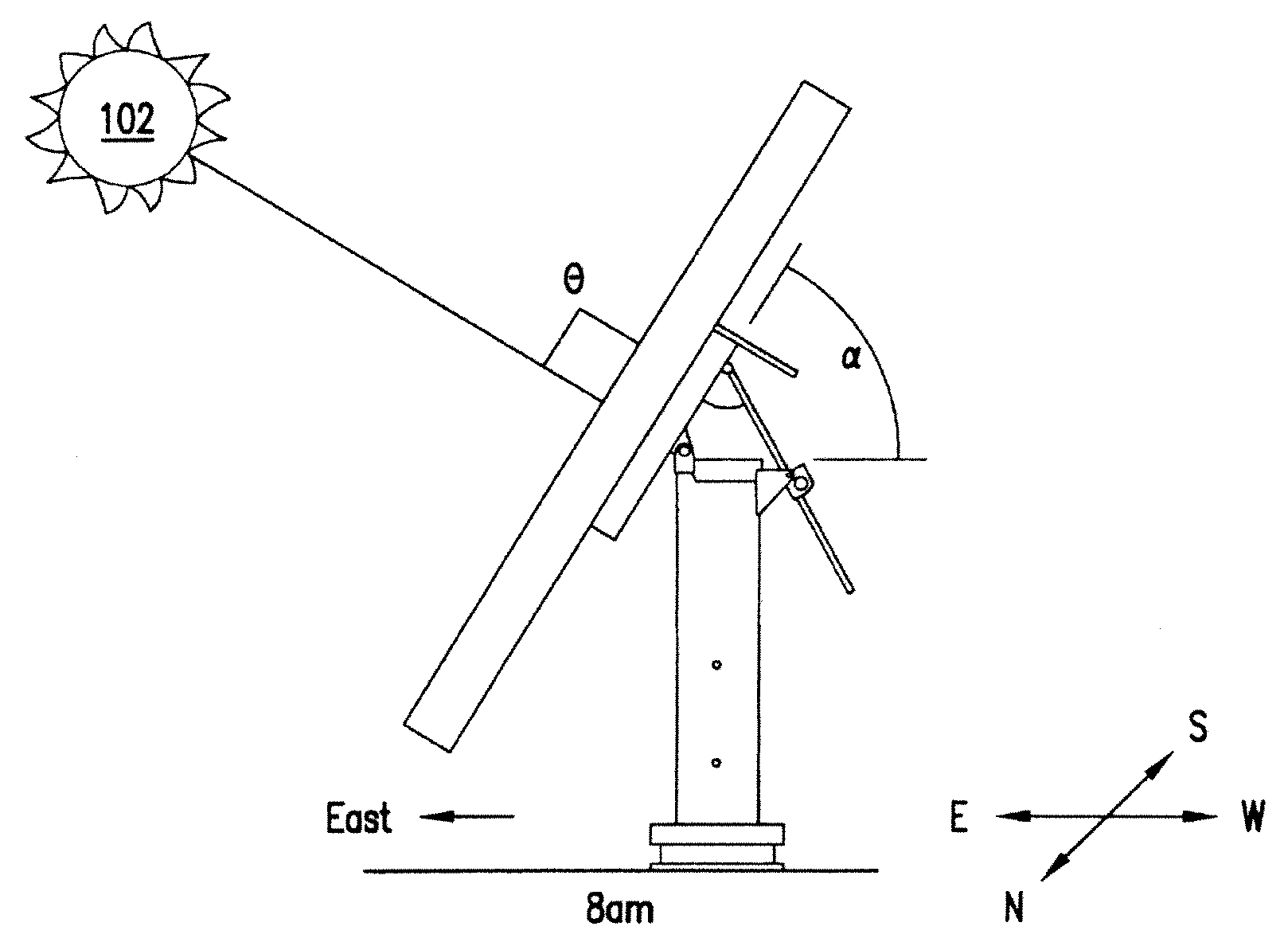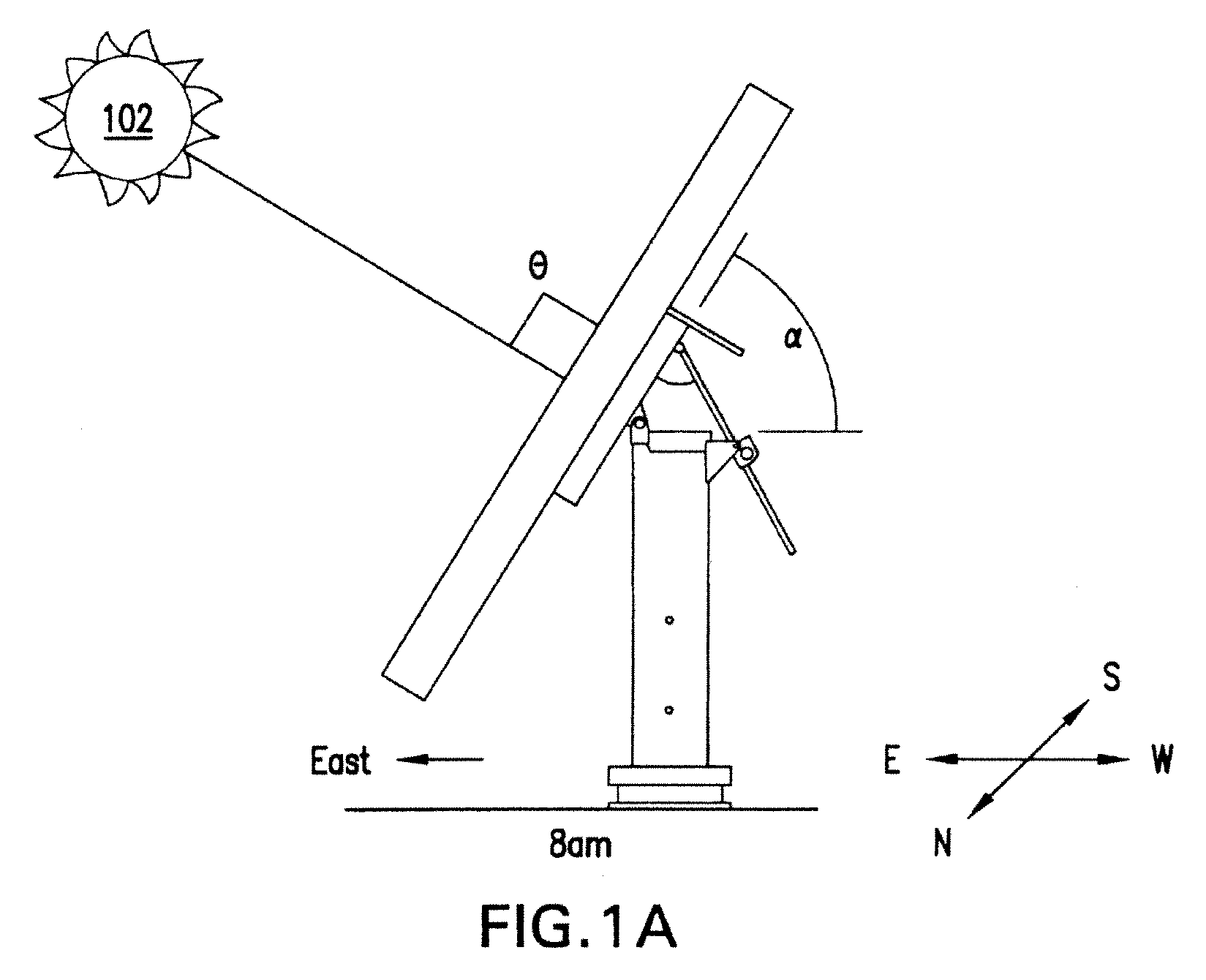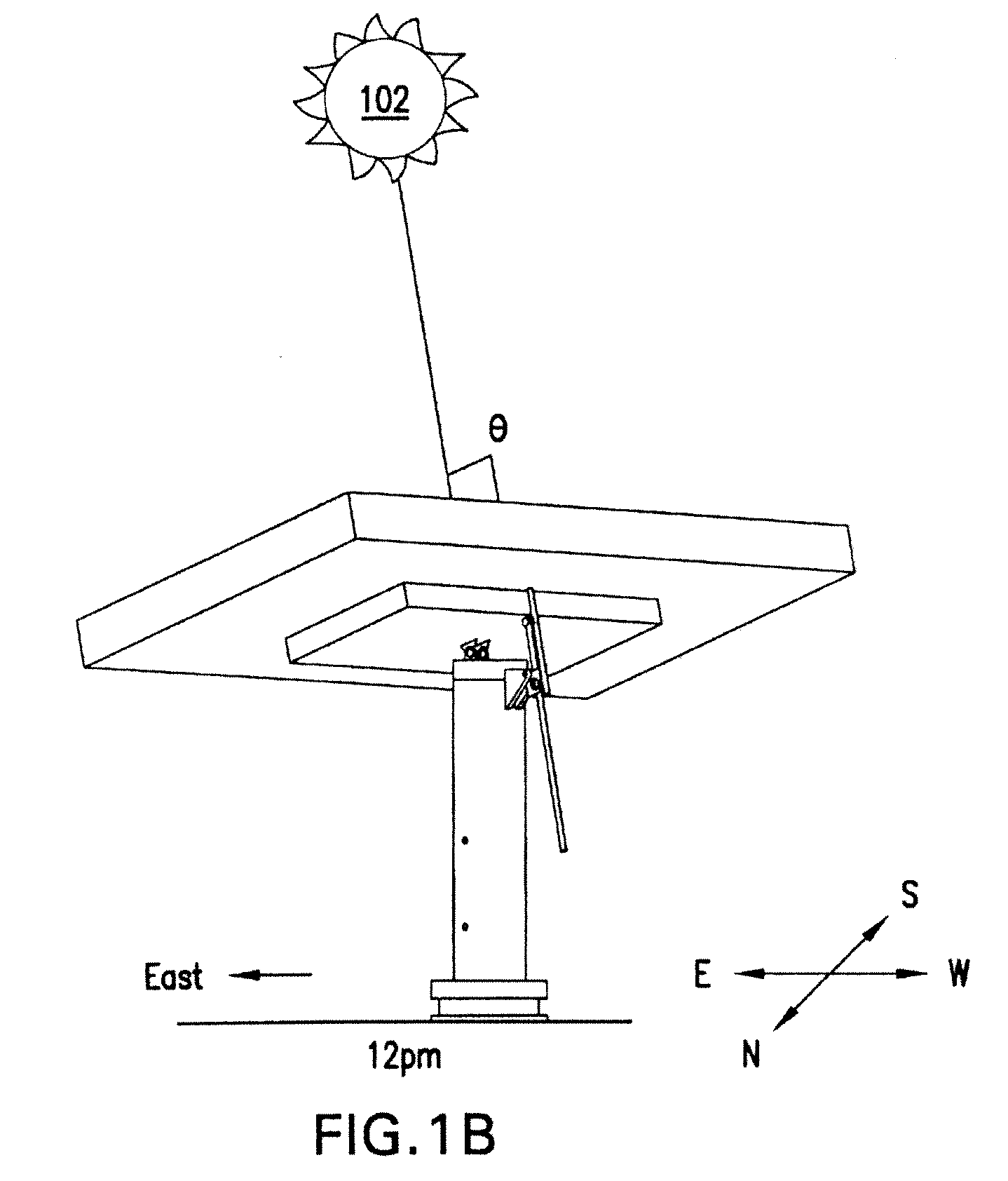Solar Tracking for Terrestrial Solar Arrays with Variable Start and Stop Positions
a solar array and start position technology, applied in the direction of optical radiation measurement, navigation instruments, comonautical navigation instruments, etc., can solve the problem of continuous movement of the sun
- Summary
- Abstract
- Description
- Claims
- Application Information
AI Technical Summary
Benefits of technology
Problems solved by technology
Method used
Image
Examples
Embodiment Construction
Overview
[0013]A terrestrial solar power system converts sunlight into electrical energy utilizing, e.g., multiple mounted arrays spaced in a grid over the ground. The array of solar cells has a particular optical size and is mounted for unitary movement on a cross-arm of a vertical support that tracks the sun. The array can include subarrays, sections, modules and / or panels.
[0014]The amount of power generated by the array is directly related to the amount of sunlight impinging upon the constituent solar cells. It is highly advantageous, therefore, to orient the array such that the plane of the array (of lenses and solar cells) is orthogonal to the incoming rays of the sun, and the power generation is maximized. To that end, a solar tracking mechanism is employed that ensures that the plane of concentrator lens results in a beam projected on the center of the respective solar cells in a continuous manner as the sun traverses the sky during the day, thereby optimizing the amount of su...
PUM
 Login to View More
Login to View More Abstract
Description
Claims
Application Information
 Login to View More
Login to View More - R&D
- Intellectual Property
- Life Sciences
- Materials
- Tech Scout
- Unparalleled Data Quality
- Higher Quality Content
- 60% Fewer Hallucinations
Browse by: Latest US Patents, China's latest patents, Technical Efficacy Thesaurus, Application Domain, Technology Topic, Popular Technical Reports.
© 2025 PatSnap. All rights reserved.Legal|Privacy policy|Modern Slavery Act Transparency Statement|Sitemap|About US| Contact US: help@patsnap.com



